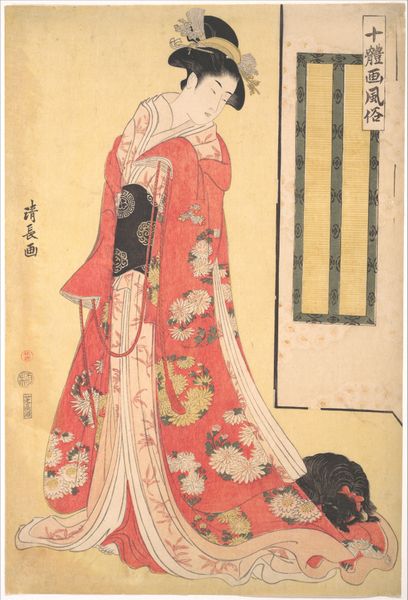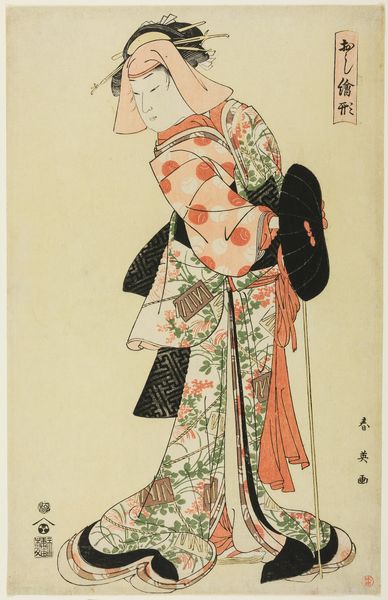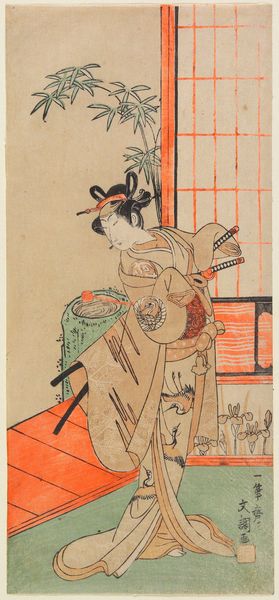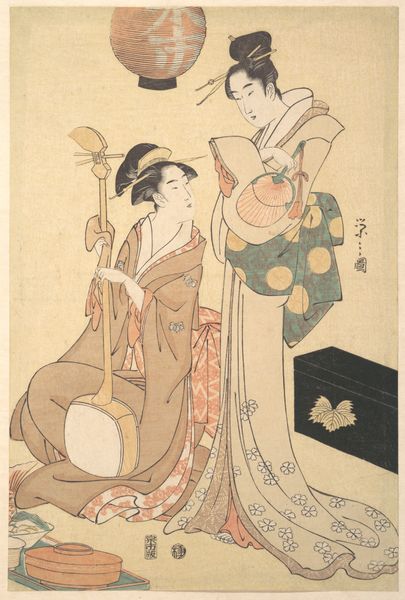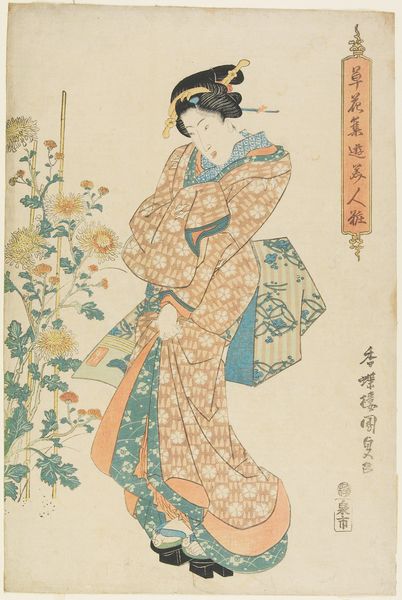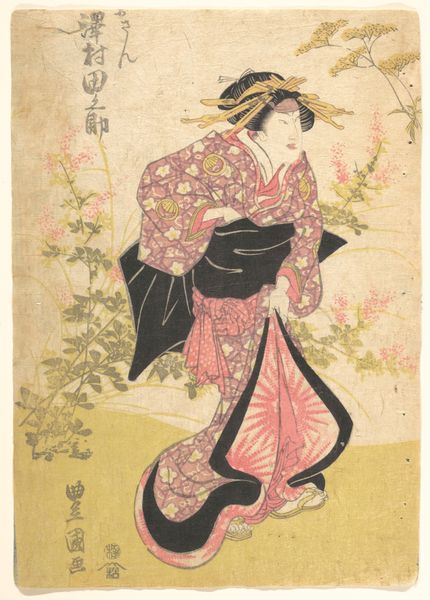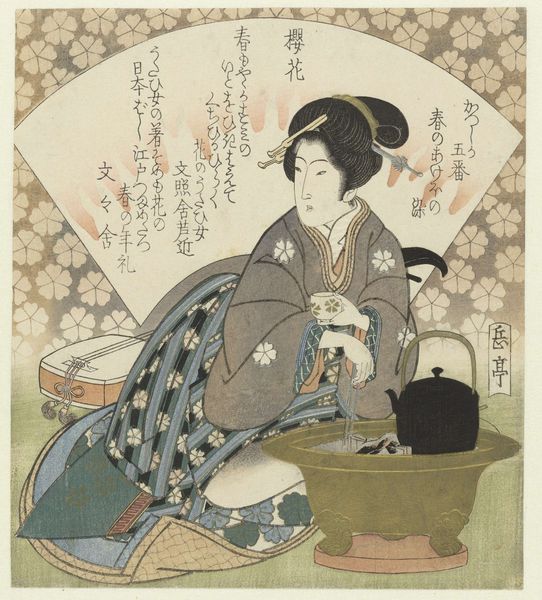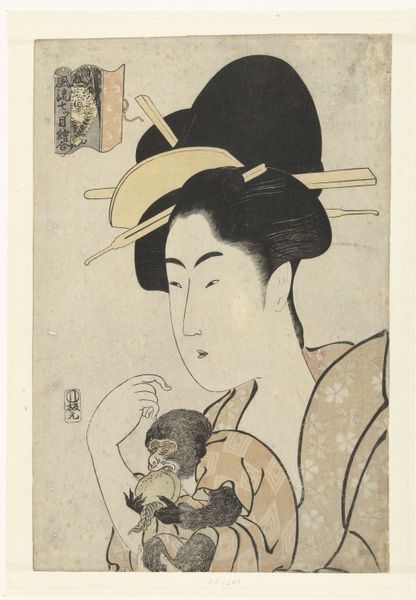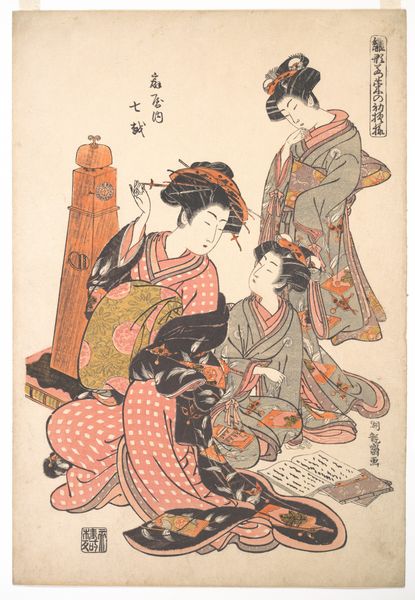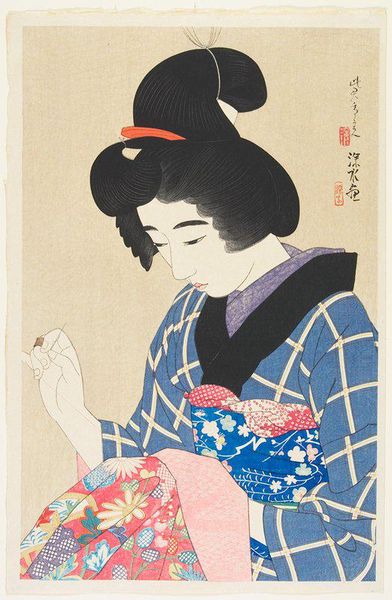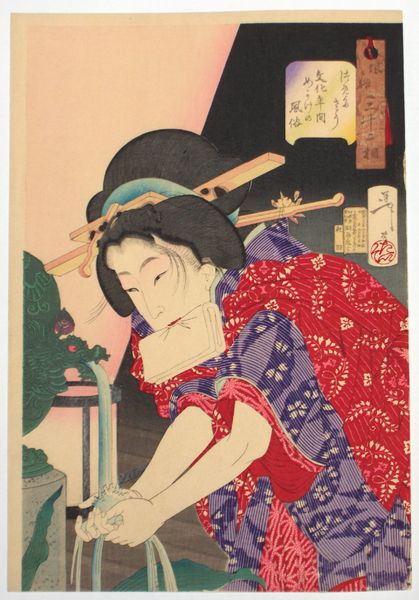
Woman Playing with a Child with a Tengu Mask 1795 - 1802
0:00
0:00
print, ink, woodblock-print
#
portrait
# print
#
asian-art
#
ukiyo-e
#
ink
#
woodblock-print
#
genre-painting
Dimensions: 14 7/16 × 9 1/2 in. (36.7 × 24.2 cm) (image, sheet, vertical ōban)23 × 19 × 1 1/2 in. (58.42 × 48.26 × 3.81 cm) (outer frame)
Copyright: Public Domain
Curator: Kitagawa Utamaro's "Woman Playing with a Child with a Tengu Mask," a woodblock print made between 1795 and 1802. It resides here at the Minneapolis Institute of Art. My first thought is...charming and ever so slightly mischievous. Editor: Charming indeed! But for me it screams MATERIAL. Look at the precision of the line, the flat planes of color. This is about craft as much as capturing a tender scene. Utamaro was a master of the ukiyo-e tradition, which itself is a testament to collaborative workshop production. Curator: It's more than mere craft though, don't you think? It’s playful, like the mother hiding her face with the edge of her robe. The child reaches for the mask, a vibrant red Tengu, a mountain goblin. A mask like that could be frightening, but it's presented as a source of amusement. It is so whimsical. Editor: But think about the labor involved. Each color would have been carved into a separate block of wood. Multiple impressions needed, exact registration… This print embodies both artistry and collective, skilled work. Even the paper matters – where was it sourced? Who prepared it? The whole social ecosystem propping this picture is fascinating. Curator: Well yes, there's labor, but doesn’t it pull you in beyond just process? Utamaro seems to have bottled an intimate moment, the fleeting joy between mother and child. That’s what he’s immortalizing. Editor: And that's why his work endures, of course. The beauty belies the systemic and practical circumstances that lead to art being formed. Ukiyo-e themselves were commercially available, designed for wider viewership – a far cry from our conceptions of 'precious' artworks in modern day. Curator: Absolutely. Utamaro tapped into a kind of universally felt experience—parenthood—yet delivered it through the lens of specific cultural references, the Tengu mask, the luxurious fabrics of the woman’s robe, creating a narrative so rich and full, no one could remain indifferent. Editor: That's exactly why the art should encourage us to look for who had their hands involved. Thinking that labor, material and access converge on this very object, enlivens its significance even more for me.
Comments
No comments
Be the first to comment and join the conversation on the ultimate creative platform.

